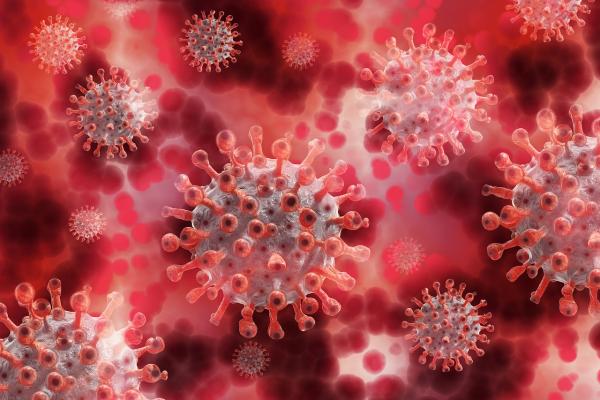SARS-CoV-2, the virus that causes COVID-19, has evolved continually, and sometimes drastically, since the appearance of the original “Wuhan strain” three years ago. Every viral replication in every infection – of which there have now been billions – creates new mutants that Darwinian evolution tests for “fitness.” The fittest survive and spread.
The current Omicron subvariant of greatest concern, called XBB.1.5, is spreading rapidly in the U.S. It accounted for 27.6 percent of U.S. COVID-19 cases in the week ending Jan. 7, up from 18.3 percent the week prior, according to CDC estimates. The Northeast had the highest proportion of patients from XBB.1.5 — more than 70% — while states in the Midwest had the lowest at about 5%.
The trait that makes XBB.1.5 more infectious than any of its predecessors is that it is more “sticky” – that is, it binds more tightly to the site on host cells where the virus attaches and enters. That greater affinity means it can cause infection at a lower dose of exposure than earlier subvariants. It does not, however, appear to be more immune-evasive, which is good news.
There has been a sharp uptick in COVID hospitalizations in the U.S. since the beginning of December, which offers a preview of what might be in store nationwide as XBB.1.5 continues to spread.
However, (too) many Americans have decided to “move on” – or should I say move back – to pre-pandemic practices. On public transportation, in airports and airplanes, big-box stores, and supermarkets, there are few masks to be seen; fewer than 20% of the U.S. population ages 5 years and older have received an updated (bivalent) booster dose; and government officials are offering tepid and often ambiguous advice.
For a number of reasons, some unobvious, all of this spells future trouble for individuals and our healthcare system.
It is true that most people who get COVID recover within a few days or, at most, weeks, but we cannot forget that this infection has already killed some 1.1 million Americans, and about 400 are now dying every day. In addition, even some who experience mild infections can experience “long COVID,” which is marked by persistent, debilitating symptoms that last months or even years following the acute infection.
The most common long COVID symptoms are fatigue, fever, cough, and difficulty breathing or shortness of breath. Less common problems are “brain fog,” headache, stroke, sleep problems, loss of smell and taste, depression or anxiety, joint or muscle pain; cardiovascular symptoms such as chest pain or palpitations; digestive symptoms, and blood clots in various organs.
Long COVID occurs in around five percent of those who have been infected, depending on exactly how it is defined. It causes prolonged pain and suffering in millions of Americans and symptoms so severe that perhaps a million are unable to work. In addition, as shown in the figure below, the CDC has identified new conditions related to COVID infection that “might be related to their previous COVID-19 illness.” Think of it as long COVID on steroids.

Credit: CDC
Inasmuch as the diseases listed on the graphic are some of the major causes of mortality among Americans, not surprisingly we are seeing elevated numbers of “excess deaths” in the U.S. population — deaths above the numbers predicted from historical data.
A recent study by scientists at the CDC’s National Center for Health Statistics took a more direct approach to estimating the number of deaths from long COVID. They searched death certificate data from the National Vital Statistics System for deaths that occurred in the United States between January 1, 2020 and June 30, 2022, using keywords PASC (post-acute sequelae of COVID-19) or long COVID and death.
During that period, “about 3,544 COVID-19 death certificates, or 0.3%,” mentioned long COVID as an underlying or contributing cause of death. “The age-adjusted death rate for long COVID was 6.3 per 1 million population for the 12 months ending in June 2022.”
Those numbers are small compared to the overall death toll from COVID of 1.1 million, but they are likely a significant underestimate, inasmuch as especially during the early part of the study period, many physicians filling out death certificates were probably unaware of long COVID. As Farida Ahmad, the lead investigator, said, “with something like long COVID, I mean even clinically it's hard to define and diagnose, then you get to how to write that on the death certificate or how to determine if it played a role in the death. A lot of this is subjective to the doctor who's writing it."
This CDC study serves as a reminder that COVID is a killer, short-, medium-, and long-term – a message that Americans need to hear and heed.
“The best way not to have long COVID is not to have COVID at all,” says Leora Horwitz, MD, a professor of population health and medicine at New York University’s Grossman School of Medicine. A high-quality mask lowers the probability of infection by any respiratory virus, and vaccination reduces the likelihood of severe illness, hospitalization, and death in those who do become infected.
However, mask-wearing is increasingly rare; only about two–thirds of Americans have had the primary series of two vaccinations, and the effectiveness of those shots has waned significantly with the passage of time and the appearance of new virus variants. Only about 16 percent of those eligible have had the updated bivalent booster that offers the strongest protection against known variants.
All the data, as well as common sense, argue for a full-court press to convince skeptical Americans to wear masks in moderate- and high-risk situations and to get the latest COVID (bivalent) booster.
Throughout the pandemic, the death rate in the U.S. has been the worst among developed, industrialized countries, and long COVID is taking a toll on our workforce and healthcare institutions. We have safe and effective tools to turn all that around, but they are no good if we don’t use them.




